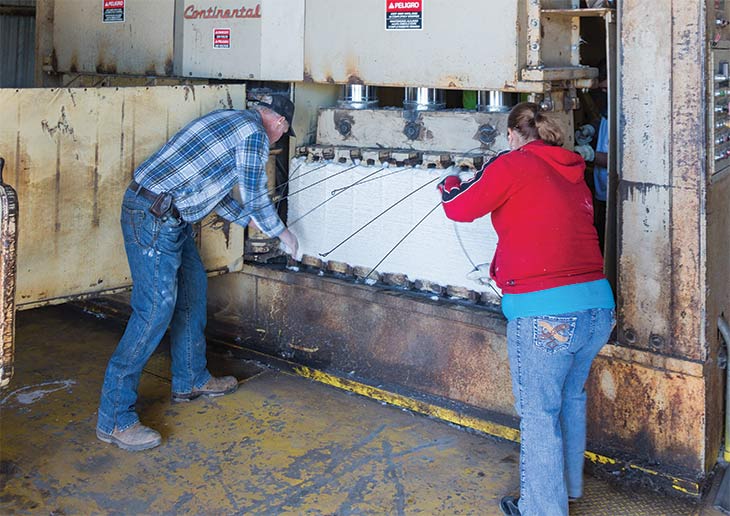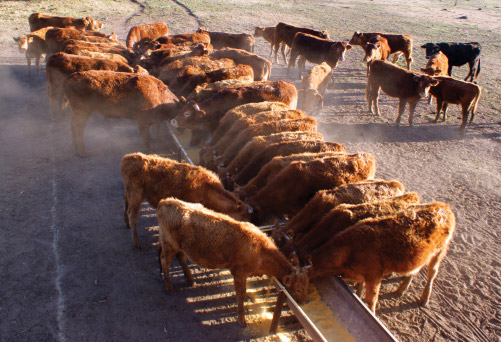
Photo by Debra Ferguson
Farm Credit agribusiness customers include timber and feed mills; beef, dairy and poultry producers and processors; cotton, citrus and tree-nut processors; grain elevators, exporters and seed developers; cotton gins and grain facilities; and nurseries, greenhouses, wineries and aquaculture businesses.
When customers ask Andrew Mangialardi how large an agribusiness loan he can make, his answer often surprises them.
“I tell them it is almost unlimited,” says Mangialardi, senior credit officer at Southern AgCredit in Mississippi — unlimited, at least, when it comes to funding a creditworthy project. Every loan still must meet the association’s underwriting standards and lending requirements.

Photo by Gary Clark
Financing agriculture for more than 100 years has given Farm Credit the expertise necessary to customize financing for agribusinesses such as cotton gins.
“As part of the nationwide Farm Credit System, we can access sophisticated capital markets,” he explains. “When an agribusiness customer’s financial needs become larger than we as a single Farm Credit association can handle, we expand our capacity by working with other Farm Credit entities to participate in and syndicate loans.”
Indeed, the ability of Farm Credit entities to jointly finance large loans and to access the nation’s money markets are among the reasons that Farm Credit has become a major source of agribusiness financing in recent years.
But they are not the only reasons.

Photo courtesy of Getty Images
Agribusinesses require a lender that understands agricultural cycles and has the financial capacity to structure large, complex loans.
Expertise and Experience
“We have the financial capacity and expertise to help agribusinesses grow and succeed,” says Scot Vidrine, vice president and manager of direct lending for Capital Farm Credit in Texas.
“We have served agriculture for more than 100 years. We’re committed to the industry, and understand the issues and cycles more than other institutions,” he says. “As producers add value to their operations via economies of scale and vertical integration, we create value by anticipating needs, being responsive and focusing on solutions.”
Mangialardi notes that Farm Credit is also equipped to handle the increasingly complex loan-structuring needs of today’s agricultural producers and agribusiness operators.
“Farm Credit has grown along with our customers,” he says.
Farm Credit associations employ experienced agribusiness lending experts and analysts who work together to provide customized agribusiness financing solutions.
Here are some examples of how Farm Credit agribusiness teams help their customers.
- Large loan commitments simplify banking. A timber mill’s former bank required the mill to take out a lien on each timber tract purchase. Southern AgCredit provided a large overall loan commitment, allowing the mill to save time and expenses by drawing on the commitment at any time.
- Leasing services bring tax benefits. Agribusiness customers can work through Farm Credit Leasing to lease rolling stock, processing equipment, storage facilities and even office equipment. Because lease payments are deductible, leasing can reduce taxable income, as well as help increase cash flow and preserve working capital.
- AgSweep helps manage cash. Farm Credit provides a cash management tool, AgSweep, that saves time and money for customers who have high cash turnover and daily cash needs. With AgSweep, they can monitor loan and checking account balances and automatically direct excess cash daily to reduce loan balances.
Commitment to Rural Communities
The Farm Credit System began lending to agricultural cooperatives in 1933, and in 1980 Congress expanded the System’s lending authorities to include basic processing and marketing facilities. Since then, local Farm Credit associations have been able to finance businesses that have a broad range of ownership structures, including individual proprietorships, partnerships and corporations, as well as cooperatives. As of June 30, 2017, the System had $40 billion in loans to agribusinesses.
Farm Credit agribusiness customers include beef, dairy and poultry producers and processors; cotton, citrus and tree-nut processors; grain elevators, exporters and seed developers; timber and feed mills; cotton gins and grain facilities; and nurseries, greenhouses, wineries and aquaculture businesses.
– Nancy Jorgensen